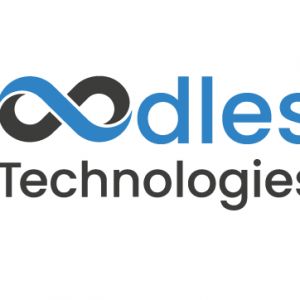Blockchain Integration for Operational Excellence in the Reinsurance IndustryPosted by Oodles Technologies on December 23rd, 2019 Blockchain’s most prevalent applications are found in the financial services market. It provides financial institutions various advantages like forming trust between transacting parties and settling disputes in real-time. But, can blockchain technology improve the situation for the reinsurance market? Let’s take a look. Understanding ReinsuranceFor the uninitiated, a simple explanation of reinsurance is that it is insurance for insurers. Reinsurers are companies that underwrite insurance policies that insurance companies have already sold, also known as the cedent. Let’s understand what is reinsurance with the following instance. Insurer A has insured a startup against different types of damages it may incur. In case of any natural disaster like flooding or a hurricane, the startup might experience huge losses, perhaps in millions of dollars. But, insurer A does not have enough assets or liquidity to cover the incurred cost without going bankrupt. Still, insurer A needs to provide insurance along with avoiding bankruptcy. In this case, it will avail insurance from another insurer (or reinsurer) to distribute some part of this liability. This practice enables growing insurers to sustain their revenue generation without risking financial collapse in case of such a claim. Furthermore, the introduction of another reinsurer, also called retrocessionaire, takes this process a step ahead. The retrocession is a process that enables a reinsurance company to share the burden of an insurance policy with another reinsurance company. Introducing Blockchain in the Reinsurance SectorThe reinsurance and insurance industry is showing significant interest in blockchain because of its potential to
In simple words, using blockchain technology in insurance and reinsurance, companies can execute transactions in a more faster, efficient, and secure way. Consequently, it can also provide end-users with several advantages occurring through peer-to-peer transparent transactions between contracting parties. To bring all these concepts into realization, a group of key insurance players came together in a consortium to test blockchain in the reinsurance context. According to the initiative, Blockchain’s potential enables multiple parties to execute digital contracts and transactions in a secure, transparent, and auditable way. Also, the consortium believes that developing an industry-wide blockchain solution can bring all stakeholders of the insurance and reinsurance industry together. It can enable them to transact business using the same methodology to ensure consistency and accuracy. Standardizing methodologies across the network is necessary to avoid disruptions and conversions between multiple systems. Essentially, an industry-standard for digital contracting with blockchain can make the industry avoid challenges it constantly faces like converting or recoding data from legacy systems or a broker’s system, or from one company to others. Benefits of Blockchain Technology in ReinsuranceAt Oodles, our experts believe that blockchain can bring significant cost savings, foster transparency, and decrease settlement times. Not only this, but it can also add a layer of security with mechanisms like cryptography and immutable ledger. According to a report by PwC, blockchain can save the industry between -10 billion. Let’s dig into some of the benefits in reinsurance that blockchain applications can provide. Reduced CostWith smart contracts, Blockchain can automate a majority of complex tasks that have been previously done by humans. The industry can replace existing paperwork with smart contracts while establishing security and efficiency. Smart contracts automate and execute business operations only if the involved parties meet pre-defined business terms. According to another PwC’s analysis, Blockchain can eliminate between 15 – 25 percent of expenses by automating data processing, which leads to preventing fraud and results in cost savings. End-to-End TransparencyWith a consortium or permissioned blockchain, reinsurance and insurance companies can limit information access to only those having permissions. At the same time, they can also ensure that all parties get complete visibility over transactions and smart contracts. By using a shared blockchain, all parties can see how and to whom risk is distributed. So, when an insured raise a claim, both the claim and the settlement between all parties can be done more quickly with fewer disputes. Overall transparency and authentic access to sensitive data mean that involved parties can have more accurate risk models. ImmutabilityAs we know blockchain’s ledger is immutable, nobody without network consensus can alter stored data. It lays the foundation for an extremely high level of security for reinsurers. The industry players can utilize this feature as a fraud prevention mechanism for both internally and between companies. Quick SettlementsPermissioned consortium blockchains can provide high throughput and speed because they comprise of a limited number of nodes. Thus and so, the reinsurance industry can significantly expedite settlements between transacting participants with blockchain. Not only this, but the blockchain’s distributed ledger technology can also provide a faster settlement layer by eliminating the need for human interaction and intermediaries. Further, with smart contract integration, it will provide faster, automated payments between participating companies. ConclusionSome of the benefits we have discussed here depend on the type of blockchain that companies use. A public blockchain like Ethereum might not be the right fit to achieve the objective companies set. However, its enterprise version, Enterprise Ethereum or other blockchain platforms like Corda, Credits, MultiChain, Hyperledger, and others can prove to be quite effective. These platforms provide blockchain solutions that ensure only permissioned participating parties get access to information. However, yet, there is a risk in the centralized design as some nodes can come together to conspire with each other and change the blockchain. In that case, a blockchain development company with its blockchain application development services can develop methodologies to eliminate the risk, such as by utilizing the features of permissioned blockchain designed specifically for such situations, such as Notaries. Like it? Share it!More by this author |


